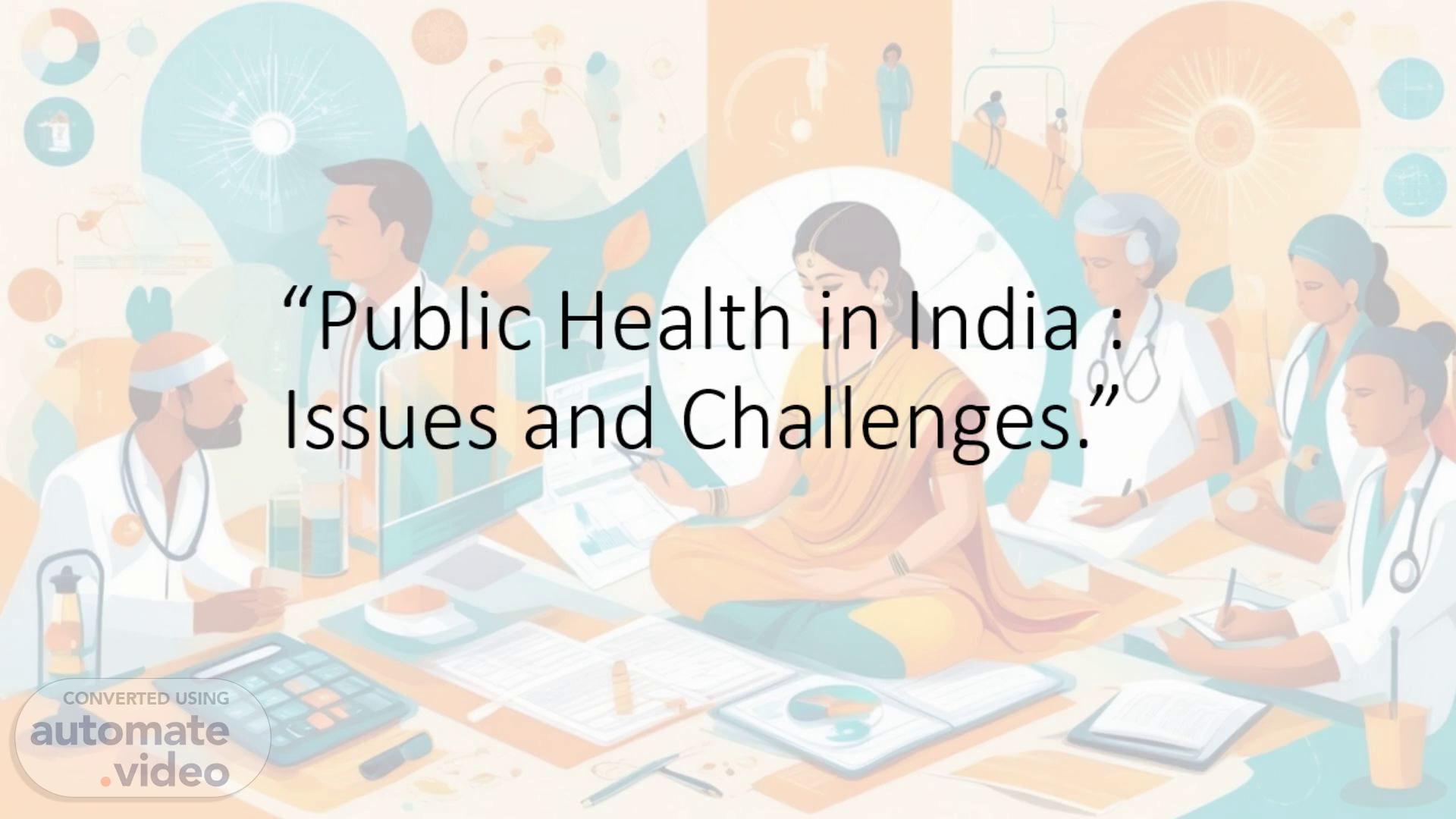
"Public Health in India : Issues and Challenges."
Scene 1 (0s)
[Audio] This text outlines the importance of understanding public health in India, given the nation's fast-growing population and economy. It examines the progress made in public health and outlines potential solutions to the most pressing issues..
Scene 2 (15s)
[Audio] Despite the progress that has been made, India still has a long way to go in achieving successful public health outcomes. With a population of 1.21 billion people, the country faces an immense burden of both communicable and non-communicable diseases. Several important demographic trends are impacting public health in India, such as rapid population growth, an increase in urbanization, and an aging population. Furthermore, economic growth and disparities between states are widening the health gap that needs to be addressed. All of this highlights the urgent need for India to strengthen and improve their public health system, in order to ensure the good health and well-being of its citizens..
Scene 3 (1m 0s)
[Audio] Public health in India is confronting multiple issues and challenges. Environment, biology, socioeconomics, and communication all factor into health in the country, and there is a necessity to improve access and use of health services. India's health landscape has been influenced by varying population, as well as environmental and industrial transformations, resulting in a high disease burden in both rural and urban regions. India has reached several healthcare-related objectives since the 1950s, but still faces persistent health problems. To progress public health in India, investment and attention has to be augmented in the healthcare infrastructure, with broader private sector participation and more productive lab capability..
Scene 4 (1m 47s)
[Audio] Despite the National Rural Health Mission (NRHM) being set up to address infrastructure improvement, human resources, financing, and community involvement, India continues to face significant challenges to improving its public health infrastructure and system. Public health courses have been introduced to medical institutions in an effort to improve primary healthcare access, and public health expenditure has been set at 1% of GDP, the lowest globally. However, sadly, rural areas still suffer from inadequate healthcare infrastructure, shortages of facilities, doctors, and medicines, while out-of-pocket expenditures lead to millions pushed into poverty every year. In addition, other challenges include a need for better health promotion, addressing socioeconomic barriers, and a lack of trained public health professionals. Rapid population growth has also brought both opportunities and challenges, such as high fertility, maternal mortality, and demographic momentum in poorer states..
Scene 5 (2m 48s)
[Audio] The need to improve public health in India is emphasized in this article, and the primary challenges to doing so are outlined. Involvement of both the government and private sectors is imperative for the process to be successful, and it is proposed that secondary data, data representation, and illustrated statistics should be appropriately used. Moreover, it is argued that holistic health cannot be achieved without recognizing mental health as a key component of comprehensive public health initiatives..
Scene 6 (3m 18s)
[Audio] Chauhan emphasizes that effective policies require consideration of sectors beyond health and the strengthening of public health systems. This entails reinforcing infrastructure, health services, and personnel. Subsequently, we will consider the consequences of this piece..
Scene 7 (3m 37s)
Selected References:. Joe, W., Mishra, U. S., & Navaneetham, K. (2008). "Health Inequality in India: Evidence from NFHS 3." Economic & Political Weekly. (http://indiaenvironmentportal.org.in/files/4_26.pdf) Narain, J. P. (2016). "Public Health Challenges in India: Seizing the Opportunities." Indian J Community Med. Volume 41. (https://www.ncbi.nlm.nih.gov/pmc/articles/PMC4799645/) Lakshminarayanan, S. (2011). "Role of Government in Public Health: Current Scenario in India and Future Scope." J Family Community Med. Volume 18(1) (https://www.ncbi.nlm.nih.gov/pmc/articles/PMC3114612/).